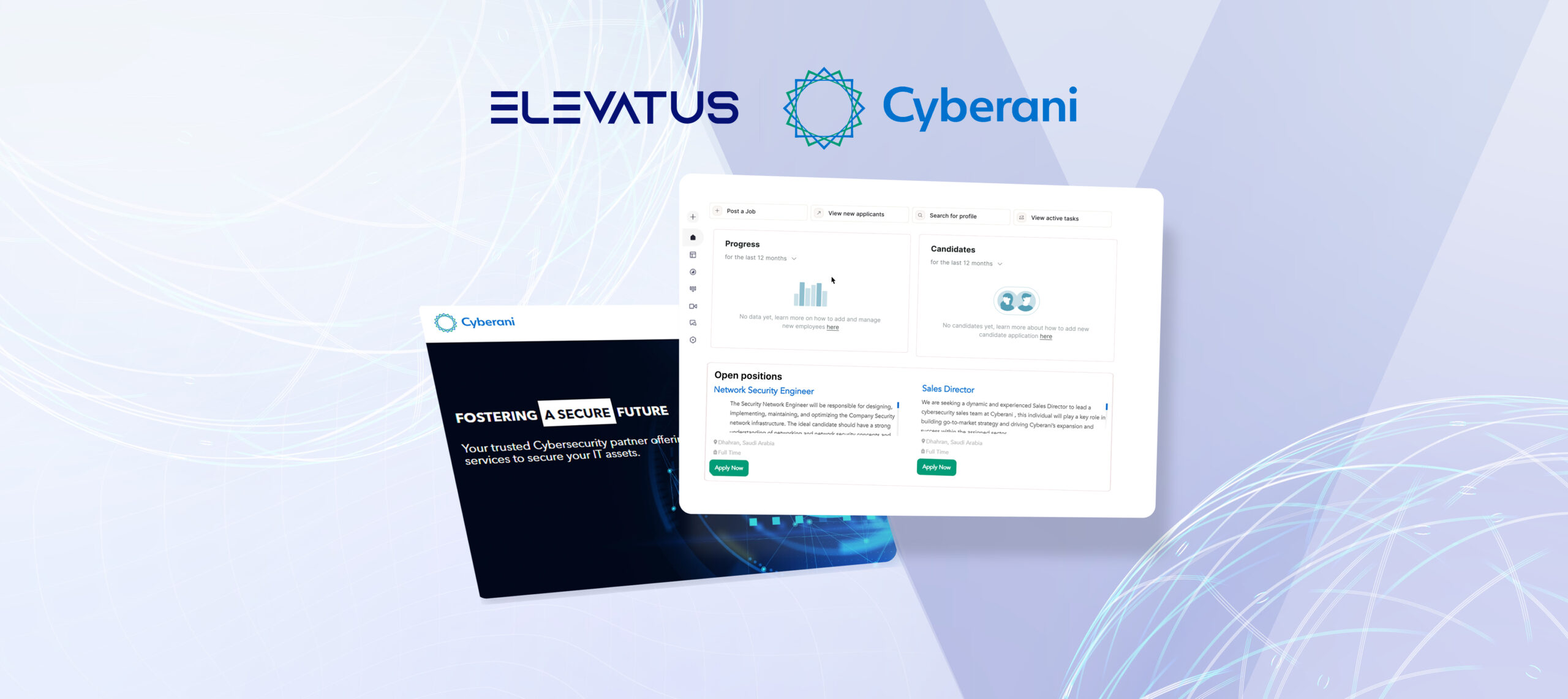
Essential Questions for an Employee Benefits Survey
November 24, 2023
Reem Al-Tamimi
Content Writer
Your employees power your business. They bring the skills, the passion, and the drive. And in return?
They deserve benefits that resonate with their needs. Constructing an all-encompassing benefits program can feel like threading a moving needle. Every individual has unique needs, and blanket solutions rarely hit the mark. This is where an employee benefits survey shines bright.
By asking the right questions, you get clear feedback. It’s not about guessing or making things up. It’s about actually listening to the people who work for you every day. By hearing their thoughts and feelings, you can understand what they need and want from their benefits, making sure you’re on the same page.
In this blog, we’re not just skimming the surface. We’re diving deep, laying out the essential questions that capture the heart of what your employees value. It’s about fine-tuning, refining, and elevating your benefits strategy. So, gear up because we’re here to help you craft the best employee benefits survey.
Put collaboration at the heart of your hiring
Instantly sync your work emails with Gmail or Outlook, centralize communication between different departments, and engage in discussions that flow in real-time.
Request a demoThe Power of Employee Benefits Surveys
Employee benefits play a pivotal role in boosting job satisfaction, fostering a positive work environment, and keeping staff morale high. At the heart of an effective benefits program lies a clear understanding of employee needs and preferences. The employee benefits survey stands out as an essential tool in achieving this. It’s more than just a questionnaire; it’s an avenue for employees to voice their opinions on aspects like health coverage, perks, wellness initiatives, and more.
Simply put, guessing what employees want can be costly and ineffective. An employee benefits survey eradicates the guesswork, providing employers with specific, actionable feedback. This not only ensures a cost-effective allocation of resources but also tailors a benefits program that truly resonates with the workforce. The ripple effect? Enhanced talent acquisition as word spreads about a company that listens and caters to its employees. Moreover, a strong benefits program, grounded in employee feedback, boosts retention rates and fosters a vibrant company culture where employees feel valued and heard.
Key Inquiries to Consider: Top Employee Benefits Survey Questions
Launching an employee benefits satisfaction survey is more than just ticking boxes. It’s about understanding the deeper sentiments behind every tick. By integrating the right employee benefits satisfaction survey questions, you’re not merely assessing how content your workforce is with their benefits. You’re also gauging their understanding of what’s offered and how these perks compare to previous employers or industry competitors.
Digging into these layers of perception and comprehension ensures you can address not just the surface-level feedback but also the root causes, paving the way for a more satisfied and informed team.
Now, let’s dive into the key employee benefits survey questions.


Employee Benefits Survey: Current Benefits Satisfaction Questions
Getting to the heart of what employees think about their benefits is essential. This set of questions does just that. It’s all about seeing how the current benefits stack up in the eyes of those who use them. By asking the right questions, you can spot the hits and misses in the current offerings.
These insights aren’t just numbers on a page. They guide the following steps, showing where to double down or make changes. Feedback here shapes the future of the benefits strategy. Because of a top-notch benefits package? It’s built on real feedback. With this in hand, companies can confidently deliver benefits that hit the mark every time.
Centralize communication to stay connected to your workforce
Communicate with your teammates in one convenient hub. Easily share feedback, monitor progress, assign roles, sync work emails with Gmail or Outlook, and streamline communication across teams to ensure nothing gets lost in the shuffle.
Request a demoExamples of current benefits satisfaction questions:
- On a scale from 1-10, how satisfied are you with the current benefits?
- How would you rate the relevance of our benefits to your personal needs? (1 being not relevant, 10 being highly relevant)
- On a scale of 1-10, how do you view the comprehensiveness of our benefits package?
- How satisfied are you with the health insurance coverage provided? (Rate from 1-10)
- How do you rate our pension plan in comparison to your previous employers? (1 being much worse, 10 being much better)
- On a scale from 1-10, how would you rate the ease of accessing and using your benefits?
- How do you perceive the quality of the wellness programs offered? (1 being poor quality, 10 being excellent quality)
- On a scale of 1-10, how do you view the value for money of our benefits package?
- How satisfied are you with the clarity and communication regarding our benefits? (Rate from 1-10)
- How important are the current benefits in your decision to continue with the company? (1 being not at all important, 10 being very important)
Health and Well-being Benefits Satisfaction Questions
Prioritizing employee health and well-being isn’t just a trend; it’s a commitment to the backbone of every organization – its people. The questions in this category aim to zoom in on the pulse of employees regarding the health and well-being benefits provided. The idea? Pinpoint what’s working and what could use a boost.
These responses won’t just be passing comments. They shape the direction, guiding where emphasis should be placed or where tweaks are needed. The feedback here isn’t just about what’s offered but how it truly impacts daily lives. The foundation of a top-tier health and well-being package is real and actionable feedback. With this understanding, companies can craft benefits that truly prioritize and support their team’s well-being.
Examples of Health and Well-being Benefits Satisfaction Questions in an employee benefits survey:
- On a scale from 1-10, how satisfied are you with the health and well-being benefits provided?
- How relevant do you find the wellness programs to your actual needs? (1 being not at all relevant, 10 being completely relevant)
- On a scale from 1-10, how would you rate the mental health support services offered?
- How satisfied are you with the preventive health measures and screenings offered? (Rate from 1-10)
- How would you rate our gym or fitness-related benefits compared to your past employers? (1 being much worse, 10 being much better)
- On a scale from 1-10, how do you view the comprehensiveness of our health benefits?
- How do you perceive the quality of the health insurance plan provided? (1 being poor quality, 10 being top-notch)
- On a scale from 1-10, how do you evaluate the proactive health initiatives taken by our company?
- How well-informed do you feel about the health and well-being benefits available to you? (Rate from 1-10)
- How crucial are health and well-being benefits in your overall job satisfaction? (1 being not at all crucial, 10 being very crucial)


Financial and Retirement Benefits Satisfaction Questions
Financial stability and a secure retirement are cornerstones of an employee’s peace of mind. This category zeroes in on these crucial aspects, exploring the sentiments of employees towards the financial and retirement benefits on offer. Why delve into these questions in your employee benefits survey? The goal is to fully understand which aspects of the financial and retirement benefits are meeting your employees’ expectations and pinpointing areas that may need enhancement. It provides a clear perspective on the strengths of your offerings and highlights potential areas that might benefit from adjustments or additions.
The feedback harvested here isn’t just surface-level. It forms the blueprint, guiding decisions on whether to bolster existing offerings or introduce new ones. True financial and retirement support isn’t about ticking boxes; it’s about aligning offerings with real-life needs. By leaning into this feedback, companies can position themselves as genuine champions of their employees’ future financial well-being.
Examples of Financial and Retirement Benefits Satisfaction Questions:
- On a scale from 1-10, how satisfied are you with the financial and retirement benefits provided?
- How would you rate the financial health seminars or resources provided by the company? (1 being very dissatisfied, 10 being very satisfied)
- How relevant do you find our retirement planning resources to your future aspirations? (1 being not relevant, 10 being completely relevant)
- On a scale from 1-10, how do you rate the pension or retirement fund matching offered by the company?
- How satisfied are you with the clarity of information provided about financial and retirement benefits? (Rate from 1-10)
- How do our financial benefits compare to those of your previous employers? (1 being much worse, 10 being much better)
- On a scale from 1-10, how well do you think the company supports employees in achieving financial security?
- How would you rate the tools and resources provided to help you make informed financial decisions? (1 being very poor, 10 being excellent)
- Do you feel the company is proactive in providing resources for financial well-being? (Rate from 1-10)
- How important are financial and retirement benefits in influencing your decision to stay with the company? (1 being not at all important, 10 being very important)
Work-Life Balance Satisfaction Questions in Employee Benefits Survey
Balancing work and life is the foundation of employee well-being and productivity. This set of questions is all about understanding how you perceive your work-life balance within the organization.
The goal? To pinpoint the aspects that are functioning effectively and where there could be opportunities for enhancement and refinement. This information allows organizations to recognize and strengthen existing practices that support work-life balance. Plus, it allows them to identify areas that may require adjustments to ensure that employees can achieve a balance between their professional and personal lives.
Achieving a harmonious work-life balance isn’t just about policies on paper but real-world impact. With these insights, you can create a workplace where employees feel genuinely supported in managing their professional and personal lives.
Examples of Work-Life Balance Satisfaction Questions:
- On a scale from 1-10, how satisfied are you with your current work-life balance?
- Do you feel that the current paid-time-off policies are sufficient? (1 being very insufficient, 10 being very sufficient)
- How well do flexible work hours accommodate your personal needs? (1 being not accommodating at all, 10 being highly accommodating)
- On a scale from 1-10, how do you rate the support provided by the company in managing workload and stress?
- How satisfied are you with the remote work options available? (Rate from 1-10)
- How do you perceive the company’s attitude towards taking vacations and time off? (1 being discouraging, 10 being encouraging)
- On a scale from 1-10, how effective are current policies in promoting a healthy work-life balance?
- How well does the company support parental leave or family-related time off? (1 being not supportive, 10 being very supportive)
- Do you feel you have enough control over your work schedule to manage personal commitments? (Rate from 1-10)
- How important is a healthy work-life balance in your overall job satisfaction? (1 being not at all important, 10 being very important)


Professional Growth and Development Questions
Investing in the professional growth and development of employees is a strategic move that not only benefits individuals but also contributes to the overall success of an organization. These questions an employee benefits survey revolve around understanding how employees perceive the opportunities for their professional advancement within the company.
It’s all about finding out what’s driving motivation and what might be holding individuals back. The insights gathered in this category serve as a roadmap, guiding where to amplify current initiatives and where to introduce new ones. A thriving work environment encourages personal and career growth, and by analyzing this feedback, organizations can ensure that their employees are continuously learning and advancing.
Examples of Professional Growth and Development Questions:
- On a scale from 1-10, how satisfied are you with the professional growth and development opportunities provided?
- Are the provided educational/training benefits in line with your professional goals? (1 being not at all aligned, 10 being perfectly aligned)
- How well do you think the company supports skill development and continuous learning? (Rate from 1-10)
- On a scale from 1-10, how effective are current mentoring or coaching programs in enhancing your career?
- Do you feel that there are enough advancement opportunities within the organization? (1 being insufficient, 10 being sufficient)
- How satisfied are you with the feedback and performance evaluation processes that contribute to your development? (Rate from 1-10)
- On a scale from 1-10, how well does the company align your professional growth with its long-term goals?
- How would you rate the availability of resources for your professional development? (1 being very limited, 10 being ample)
- Do you believe that your current role contributes positively to your career progression? (Rate from 1-10)
- How important is professional growth and development in your overall job satisfaction? (1 being not at all important, 10 being very important)
Miscellaneous Benefits and Perks Questions
Beyond the core benefits, it’s the little extras that can make a difference in employee satisfaction. This section of questions in an employee benefits survey explores how employees perceive the miscellaneous benefits and perks offered by the organization.
These extras can significantly impact daily life and job satisfaction. The insights gathered here serve as a compass, guiding where to maintain or enhance current offerings or where to consider introducing new ones. These added benefits contribute to a positive workplace culture and enhance overall job satisfaction.
Examples of Miscellaneous Benefits and Perks Questions:
- On a scale from 1-10, how satisfied are you with the miscellaneous benefits and perks offered?
- Are the current commuting or transportation benefits satisfactory? (1 being very unsatisfactory, 10 being very satisfactory)
- How well do you think the company supports work-life balance through flexible scheduling options? (Rate from 1-10)
- On a scale from 1-10, how effective are current recognition and rewards programs in motivating you?
- Do you find the current wellness and fitness perks beneficial to your overall health and well-being? (Rate from 1-10)
- How satisfied are you with the accessibility and quality of on-site amenities? (1 being very dissatisfied, 10 being very satisfied)
- On a scale from 1-10, how well do the company’s miscellaneous benefits and perks align with your personal needs?
- How would you rate the availability of resources for personal development and growth? (1 being very limited, 10 being ample)
- Do you believe that these additional benefits positively impact your overall job satisfaction? (Rate from 1-10)
- How important are miscellaneous benefits and perks in your decision to stay with the company? (1 being not at all important, 10 being very important)


Improving Employee Benefits Through Feedback Analysis
Analyzing both quantitative and qualitative feedback effectively is key to refining and optimizing an organization’s benefits strategy. To do this successfully, several strategies should be in place.
Firstly, a thorough analysis of quantitative data, such as satisfaction ratings and numerical responses, helps identify trends and areas of concern. Understanding these metrics provides a clear picture of what’s working and what needs attention.
Additionally, qualitative feedback, often gathered through open-ended questions or comments, offers valuable context and insights. It delves into the “why” behind the numbers, uncovering the root causes of employee sentiments.
Equally important is the need for follow-up actions. It’s not enough to collect feedback; organizations must act upon it. This involves addressing issues, enhancing existing benefits, or introducing new ones based on employee input.
Open communication is another crucial element. Employees should know that their feedback matters and that changes are being made in response to their input. Regular updates on benefits improvements create transparency and foster trust within the organization.
In conclusion, a well-rounded approach to feedback analysis, coupled with proactive follow-up actions and transparent communication, ensures that an organization’s benefits program continues to evolve in ways that align with the needs and preferences of its workforce.
Discover a treasure trove of tailored HR templates – all geared towards taking your recruiting to the next level.
Transform blank pages into HR gold in seconds with our customizable Templates. Browse our virtual shelves, select your favorites, add your unique touch, and check out for free!
Do not start from scratch again and again! Browse other ready-made HR Surveys:
Turn top talent to employees fast
Hire, assess, onboard and manage top talent for every job. See how Elevatus streamlines everything; from acquire to new hire.
Request a demoAuthor
Reem Al-Tamimi
Don't miss a thing!
Stay one step ahead. Subscribe and get the latest updates, news, and insights from Elevatus straight to your inbox.





